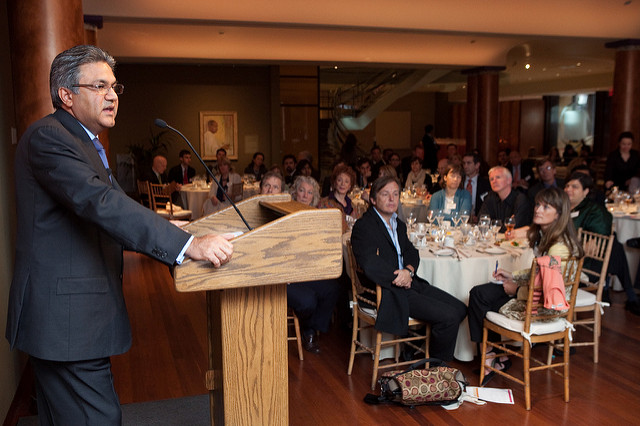How to Deliver a Ceremonial Speech?: Expert Tips
Imagine standing in front of an eager audience, the spotlight warming your face, with your heart racing and your palms a little sweaty. You’re about to deliver a ceremonial speech, and you want it to be memorable.
Whether you’re speaking at a wedding, a graduation, or an awards ceremony, the pressure to capture the moment perfectly can feel overwhelming. But don’t worry—you’re not alone. This article will guide you step-by-step on how to craft and deliver a speech that resonates, leaving a lasting impression.
You’ll learn how to engage your audience from the first word, evoke emotions, and convey your message with clarity and confidence. Ready to captivate your listeners and leave them inspired? Let’s get started.
Crafting Your Message
Crafting a memorable ceremonial speech involves understanding your audience and using simple words. Engage listeners with a clear and heartfelt message. Practice your delivery to ensure confidence and clarity.
Crafting your message is the cornerstone of delivering a ceremonial speech that resonates and leaves a lasting impression. It’s not just about what you say but how you say it, ensuring that every word serves a purpose and connects with your audience.Identifying The Purpose
The first step in crafting your message is pinpointing the purpose of your speech. Are you celebrating a milestone, honoring an individual, or marking a significant event? Consider what you want your audience to feel or understand after your speech. For instance, when I delivered a speech at my friend’s wedding, I aimed to capture the essence of their journey together, highlighting moments that defined their relationship.Understanding The Audience
Knowing your audience is crucial in shaping your message. What are their interests, values, and expectations? Think about how your words will resonate with them. Reflecting on a speech I gave at a graduation ceremony, I knew the audience included hopeful graduates and proud parents, so I tailored my message to inspire while acknowledging the hard work and support behind their achievements.Choosing The Right Tone
Deciding on the tone of your speech can make all the difference. Should your message be formal, humorous, or heartfelt? The occasion and audience dictate the tone. I recall a corporate event where a light-hearted tone was key to engaging a diverse crowd. I chose anecdotes that were relatable yet professional, striking a balance that kept the audience engaged.Crafting your message involves not just writing but connecting. How will you ensure your speech speaks to the hearts of those listening?

Credit: wisconsin.pressbooks.pub
Structuring The Speech
Structuring a ceremonial speech can feel overwhelming. A clear structure simplifies this process. It ensures the speech is engaging and memorable. By focusing on key components, you can deliver a speech that resonates with your audience. These components include a powerful opening, a well-developed core message, and a memorable conclusion.
Opening With Impact
The beginning of your speech sets the tone. Aim to capture attention immediately. Use a quote, story, or a bold statement. This draws listeners in. Your opening should connect to the main theme. Keep it concise and relatable. This ensures your audience remains engaged.
Developing The Core Message
The core message is the heart of your speech. Focus on a few key points. Ensure they are clear and relevant. Use examples and anecdotes to illustrate ideas. This helps in making complex ideas simple. Maintain a logical flow to keep listeners on track. Avoid jargon and complicated language. Simplicity is key.
Creating A Memorable Conclusion
The conclusion should reinforce your main message. Summarize key points briefly. Use a call to action or final thought. This leaves a lasting impression. The conclusion should resonate emotionally. A strong ending ensures your speech is remembered. Make sure it ties back to your opening.
Incorporating Personal Touches
Delivering a ceremonial speech with a personal touch makes it memorable. Audiences connect better with speakers who share personal experiences. This connection fosters a sense of authenticity and warmth. Personal touches transform a formal event into a heartfelt gathering.
Using Anecdotes And Stories
Stories captivate listeners. They offer a glimpse into the speaker’s life. Anecdotes can illustrate key points effectively. They make abstract ideas relatable. Share a story about a personal challenge or triumph. This can inspire and engage your audience. Ensure stories are relevant to the event’s theme.
Incorporating Humor Appropriately
Humor lightens the mood and captures attention. A well-timed joke can break the ice. It helps in making the speech enjoyable. Be mindful of the audience’s sensibilities. Avoid sensitive topics that might offend. Keep humor light, and relatable. A simple, funny story can leave a lasting impression.
Balancing Emotion And Information
A ceremonial speech needs both emotion and facts. Share feelings to create a bond with your audience. Balance this with informative content. This keeps the speech both engaging and insightful. Too much emotion might overwhelm listeners. Too many facts can become dull. Aim for a mix that holds attention and conveys your message.
Mastering Delivery Techniques
Crafting a ceremonial speech requires clear delivery and connection with the audience. Practice speaking slowly and maintain eye contact. Use stories and emotions to engage listeners, ensuring your message is heartfelt and memorable.
Delivering a ceremonial speech involves more than just words. It requires effective communication skills. Mastering delivery techniques can set your speech apart. These techniques focus on body language, vocal variety, and audience engagement. Each aspect plays a crucial role. Let’s explore them in detail.Practicing Effective Body Language
Body language speaks volumes. Stand tall and maintain good posture. Use hand gestures to emphasize points. Keep your movements natural. Avoid crossing your arms or looking down. Eye contact builds connection. It shows confidence and sincerity. Smile genuinely to create warmth. Your expressions should match your message. This helps convey emotions effectively.Utilizing Vocal Variety
Your voice is a powerful tool. Vary your tone to keep interest alive. Change your pace to emphasize key points. A pause can be impactful. It gives listeners time to absorb information. Avoid speaking in a monotone. Instead, let your voice express enthusiasm. Adjust your volume for clarity. Ensure everyone can hear you clearly. This keeps the audience engaged.Engaging With The Audience
Connect with your audience from the start. Use questions to invite participation. Acknowledge their presence with a smile. Share stories or anecdotes to draw them in. Relate to their experiences. This makes your speech relatable. Encourage nods or smiles in response. It shows they are following. Be attentive to their reactions. Adjust accordingly to maintain interest.Overcoming Public Speaking Anxiety
Public speaking can be nerve-wracking. Many people experience anxiety before speaking. Overcoming this fear can seem challenging. Yet, with the right techniques, it is achievable. Learning how to manage anxiety can transform your speech. Start by focusing on essential strategies. These methods can help you speak confidently. Let’s explore how to ease your nerves.
Preparation Tips
Preparation is key to reducing anxiety. Begin by understanding your audience. Know what they expect from your speech. Write your speech clearly. Practice it multiple times. Rehearsing helps you become familiar with your content. Use bullet points to remember key ideas. Record yourself while practicing. Listen to identify areas of improvement. Adjust your tone and speed. Rehearse in front of friends or family. Their feedback can be valuable.
Visualization Techniques
Visualization can calm your nerves. Imagine yourself delivering a great speech. Picture the audience reacting positively. Visualize each step of your speech. This mental exercise boosts your confidence. Close your eyes and breathe deeply. Focus on a positive outcome. Imagine the applause at the end. Visualization prepares your mind for success.
Building Confidence
Confidence comes with practice. Start with small speaking tasks. Build your way up to larger audiences. Join a local speaking club. Gain experience in a supportive environment. Learn from other speakers. Observe their techniques. Pay attention to their body language. Mimic their confidence. Remember, everyone makes mistakes. It’s part of the learning process. Stay positive and believe in your skills.

Credit: stockcake.com
Enhancing Speech With Visual Aids
Delivering a ceremonial speech is a chance to captivate your audience. Visual aids can boost your message and keep listeners engaged. They add depth and clarity to your words, providing a memorable experience. But choosing the right visuals is crucial. It can mean the difference between success and distraction.
Choosing Appropriate Tools
Select tools that fit your speech’s tone and purpose. PowerPoint is great for slideshows. It allows text, images, and videos. For something interactive, consider Prezi. It offers dynamic presentations that capture attention. Physical props can also be effective. They add a tangible element to your speech. Pick visuals that complement, not overshadow, your message.
Integrating Visuals Seamlessly
Visuals should flow naturally with your speech. Plan where each visual fits in your speech. Use them to emphasize key points. This helps reinforce your message. Practice transitioning between speaking and visuals. This keeps the audience focused on your words. Ensure your visuals are clear and visible to everyone.
Avoiding Common Pitfalls
Too many visuals can overwhelm and confuse. Keep them simple and relevant. Avoid small text or busy images. They distract rather than inform. Test all equipment before the event. Technical issues can disrupt the flow of your speech. Stay calm and prepared for any hiccups. Your confidence will shine through.
Handling Unexpected Challenges
Facing unexpected challenges during a ceremonial speech can be daunting. Stay calm, adapt quickly, and connect with your audience. Simple, genuine words can make a big impact, ensuring your message resonates despite any hiccups.
Delivering a ceremonial speech can be a rewarding experience, but it often comes with unexpected challenges. These challenges can disrupt the flow of your presentation and test your ability to think on your feet. Whether it’s a technical glitch, an audience interruption, or a last-minute change in the program, handling these surprises gracefully can make or break your speech. Here are some practical tips to keep you prepared and composed when facing the unexpected.Dealing With Technical Issues
Technical issues can occur at any time. A microphone might stop working, or a presentation slide might fail to load. When this happens, stay calm and composed. If a microphone fails, project your voice as much as possible and continue speaking. This shows confidence and keeps the audience engaged. For visual aids, consider describing the slides verbally or using hand gestures to make your point. Always have a backup plan. Bring printed notes or a hard copy of your presentation, just in case technology lets you down. Having a plan B reassures you and keeps your speech on track.Managing Audience Interruptions
Audience interruptions can throw you off balance. Someone might ask an unexpected question or engage in side conversations. How you handle these interruptions can influence how your audience perceives you. If someone interjects with a question, acknowledge it politely. You can choose to answer immediately or suggest discussing it after your speech. This keeps the flow intact and shows respect for your audience’s input. For side conversations, a friendly reminder to the audience about the importance of listening can be effective. Maintain eye contact and continue with your speech, showing that you are in control of the situation.Adapting To Last-minute Changes
Last-minute changes can be daunting. You might be informed about a change in the schedule or a new topic to cover right before your speech. Adaptability is key here. Take a moment to gather your thoughts and adjust your plan. Use any additional time to brainstorm key points or rearrange your notes. This ensures that your delivery remains smooth and coherent. Embrace the change as an opportunity to showcase your versatility. Ask yourself how you can use this situation to engage your audience even more. This mindset shift can turn a challenge into a memorable moment in your speech. Handling unexpected challenges is about staying calm and being prepared. Have you faced a surprise during a speech? How did you handle it? Share your experiences and insights in the comments below!
Credit: www.udemy.com
Frequently Asked Questions
What Makes A Ceremonial Speech Effective?
An effective ceremonial speech captures emotions and connects with the audience. It should have a clear message, engaging stories, and a strong opening. Using appropriate humor and memorable quotes can enhance impact. Practicing delivery ensures confidence and clarity, making the speech more relatable and impactful.
How To Prepare For A Ceremonial Speech?
Preparation involves understanding the occasion and audience expectations. Research topics related to the event and choose relevant anecdotes. Practice your speech multiple times to ensure smooth delivery. Use notes for key points, but maintain eye contact. Rehearsing helps with timing and confidence, ensuring a polished presentation.
What Should Be Included In A Ceremonial Speech?
Include a heartfelt message relevant to the event. Share engaging stories or anecdotes that resonate with the audience. Use quotes that emphasize the speech’s theme. Ensure your speech has a clear introduction, body, and conclusion. Tailor your content to suit the occasion and audience expectations for maximum impact.
How To Overcome Nervousness During Speech Delivery?
Overcoming nervousness involves practice and preparation. Familiarize yourself with the speech content to boost confidence. Take deep breaths before starting. Visualize a successful delivery and focus on engaging the audience. Positive thinking and maintaining eye contact help reduce anxiety during the speech.
Conclusion
Delivering a ceremonial speech requires preparation and heart. Speak with sincerity. Connect with your audience. Use stories to make it memorable. Keep your language simple and clear. Practice your speech multiple times. This helps build confidence. Remember to breathe and pause when needed.
Engage listeners with eye contact. Ensure your message is heartfelt and relevant. Your genuine effort will shine through. With these tips, you will deliver a meaningful speech. Audiences will appreciate your authenticity and clarity.

